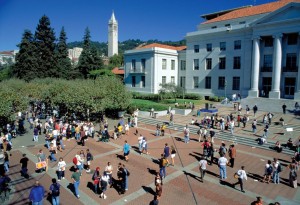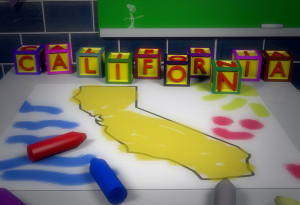Posts Tagged: cap
Opinion
OPINION: California’s cap-and-trade program is working. Since it was launched in 2013, the system has helped drive down greenhouse gas emissions, while the state’s economy has flourished. The billions of dollars the program generates have funded “climate credit” payments to electric utility customers, low-carbon transit projects, and home weatherization improvements in low-income communities.
News
It’s a common story. California high school graduates with top grades and scores still aren’t able to get into the University of California campus of their choice. Assemblyman Kevin McCarty, D-Sacramento, says he hears that complaint from constituents “all the time – at Trader Joe’s, at soccer fields and walking down the street.”
News
First, take 3,000 political junkies, mix in a few dozen ambitious politicians, stir thoroughly. Let simmer for three days and — Whee! — you have California’s Democratic Party Convention. It was an earnest carnival reflecting what makes California politics so much fun.
News
Calpensions: One of the two initiatives filed by a pension reform group last week would cap state and local government spending on retirement benefits for most new hires at 11 percent of pay, much like a Utah pension reform five years ago.
Opinion
OPINION: California voters passed Proposition 2 last November to establish a statewide “rainy day” fund. Unfortunately, a one-size-fits-all law, SB 858, also passed last year as part of the state budget process. SB 858 prevents school districts from saving adequately to prepare for their own rainy day by setting a maximum average “reserve cap” of 6 percent on school districts reserves.
News
Calpensions: In the competition for top talent, the University of California has been able to offer something increasingly rare among leading private universities: a generous lifetime pension. Now a much lower cap on pensions for new UC employees is part of an agreement to freeze UC resident tuition for two years announced last week by Gov. Brown and UC President Janet Napolitano.
Opinion
OPINION: Late last year, the Legislature passed a fiscally irresponsible law that prevents local school districts from maintaining prudent budget reserves necessary to prepare for future economic downturns, to invest in classroom improvements, and to protect our students. As ridiculous as that sounds, unfortunately that’s the reality. That’s why thousands of educators, including school board members, school district officials, community members, parents and others are calling for the Legislature to repeal the local school district reserve cap.
Opinion
Gov. Jerry Brown proposed in his recent state-of-the-state address that California should take steps to approve an aggressive new greenhouse gas reduction goal for 2030. This additional proposal would take California beyond the current 2020 goal set by Assembly Bill 32, the California Global Warming Solutions Act of 2006. The AB 32 Implementation Group is concerned that creating a 2030 goal will shift attention away from current regulations that are intended to meet the greenhouse gas emissions goal California’s elected officials adopted in 2006 for 2020.
News
California’s $67.5 billion bullet train has been described as “off-track” so long that some thought it was permanently derailed. In fact, the outlook has brightened: A series of court decisions, a move by Gov. Brown to pump money into the effort and an awakening interest from high-dollar investors has given the huge project new momentum.
Opinion
OPINION: So, while the program is certainly generating revenue for the state, is it working? Eighteen months in, it appears the answer is yes. Firms affected by the requirements say that they are paying attention to it, that they believe it’s here to stay, and that it’s prompted them to look at ways to reduce emissions. In recent interviews with cement industry stakeholders we learned that companies are factoring the carbon price into their analysis of investment opportunities.









